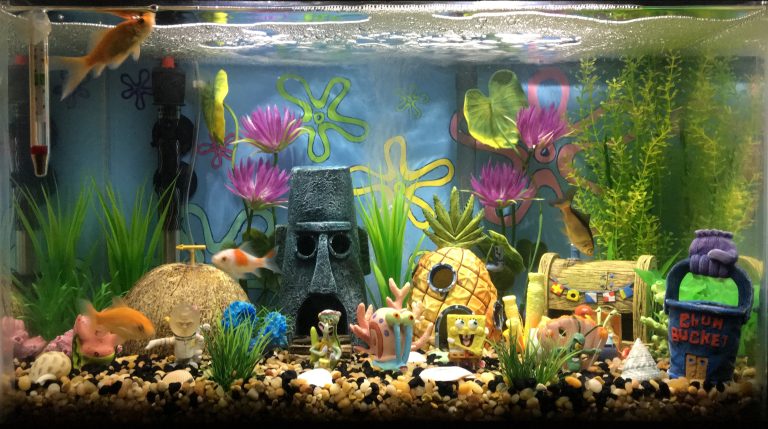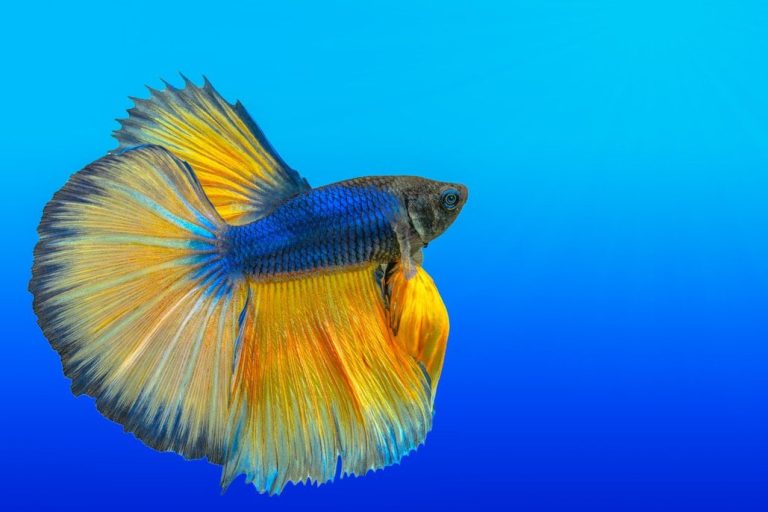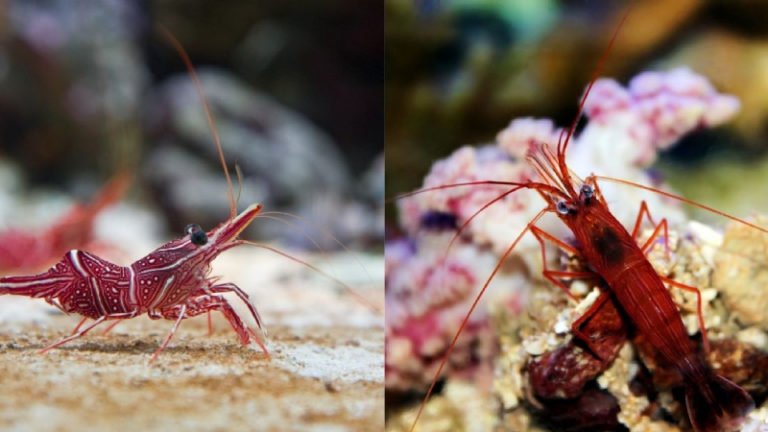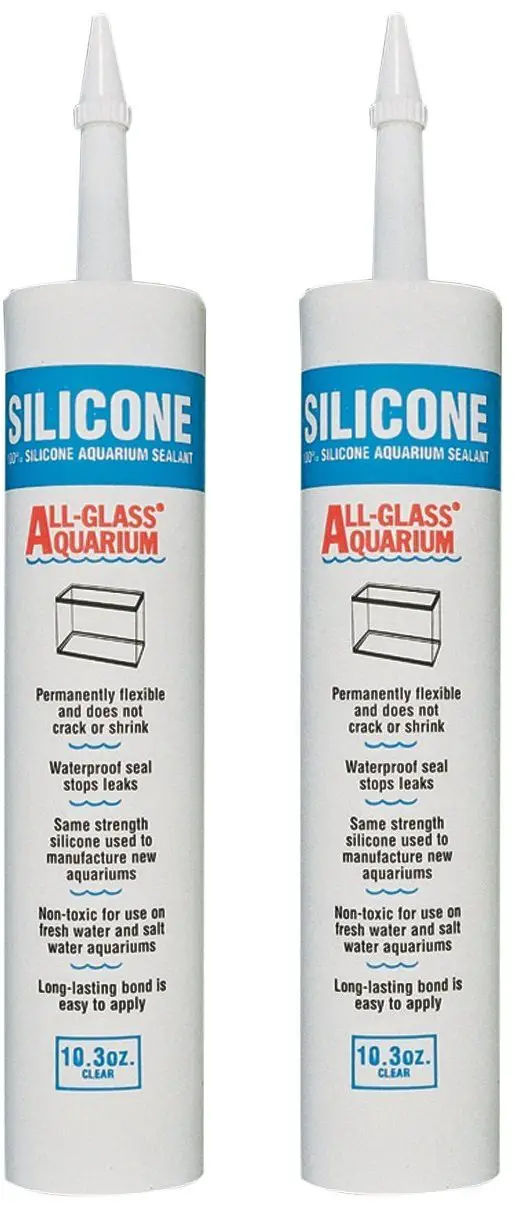10 Effective Ways to Eliminate Parasites from Your Fish Tank
To get rid of parasites in a fish tank, use a parasite medication prescribed by a veterinarian or pet store. Water changes and thorough cleaning of the tank and equipment can also help prevent the spread of parasites.
Parasites, such as ich, flukes, and velvet, can quickly spread among fish in a tank, causing disease and even death. It is essential to act promptly to get rid of these parasites to ensure the health and well-being of your fish.
Using a parasite medication recommended by a veterinarian or pet store can eliminate the parasites, but you must also clean the tank, gravel, and equipment thoroughly to remove any lingering parasites or eggs. Regular water changes can help prevent future outbreaks and keep your fish healthy. In this article, we will discuss how to get rid of parasites in your fish tank and some preventative measures you can take to keep your fish healthy.

Credit: www.amazon.com
Identifying Parasites In Your Fish Tank
Spotting Common Parasite Symptoms
Fish parasites can affect the health and happiness of your aquatic pets. To treat them effectively, you must spot the signs of a parasitic infection. Here are some of the most common parasite symptoms to look out for:
- White spots on a fish’s body, fins, or eyes can be a sign of a parasitic infection.
- Your fish may show signs of lethargy, hiding, or refusal to eat if they are infested with parasites.
- Odd swimming patterns or rubbing themselves against surfaces in their tank can be a cry for help from your fish.
- If you notice any irregularities in your fish’s skin, such as bumps or split fins, it’s time to investigate a potential parasitic infection.
Examining The Physical Characteristics Of The Parasites
Once you have identified potential parasitic symptoms, you can examine the parasites themselves. Here are some key physical characteristics of common fish parasites:
- Ich or white spot disease is characterized by small white spots on a fish’s body, fins, or eyes. These can be seen with the naked eye.
- Flukes are tiny, flatworm-like parasites that attach to a fish’s skin or gills. They are difficult to see with the naked eye and may need to be magnified under a microscope for proper diagnosis.
- Anchor worms look like little worms or threads protruding from a fish’s skin. They can grow up to 1 cm in length.
- Velvet is a yellow or brown dust-like substance that appears on a fish’s body. It can spread quickly and is a sign of a severe parasitic infection.
Treating parasitic infections in your fish tank requires a careful diagnosis and a comprehensive treatment plan. By knowing the signs and physical characteristics of common fish parasites, you can take the necessary steps to ensure your fish remain healthy and happy.
The Consequences Of Parasites In Your Fish Tank
Maintaining a clean and healthy fish tank is essential to keep your fish in good health. One of the primary concerns in this regard is parasites. Parasites can have severe consequences for your fish’s health and overall water quality. Let’s take a closer look at these consequences.
The Effects On Fish Health
Parasites in fish tanks can have a variety of negative consequences on your fish’s health, including:
- Weakening their immune system
- Causing physical damage to their bodies
- Leading to disease and infections
- Decreasing their lifespan
It is essential to note that some parasites can be deadly to fish, and even healthy fish can become ill or succumb to parasites.
The Effects On Overall Water Quality
Due to their parasitic nature, these organisms can have a detrimental effect on the overall water quality of your fish tank. Here are some of the consequences:
- Parasites release toxic chemicals and waste that degrade the water quality.
- The accumulation of these toxins can cause imbalances in the water’s chemical composition, resulting in unhealthy living conditions for fish.
- Poor water quality can lead to diseases and increased mortality rates for fish.
- Parasites can disrupt the biological balance of the aquarium, leading to other organically harmful bacteria and other microorganisms.
It’s essential to keep checking your fish for any symptoms of infection or parasitic infestation to ensure their well-being and longevity. Maintaining proper water quality and timely treatment of parasitic infestations can help keep your aquarium healthy, and your fish happy.
Natural Remedies To Eliminate Parasites
Getting rid of parasites in a fish tank can be a challenging task. Not only do these tiny creatures harm your fish, but they may also affect their habitat. Adding chemicals to your tank to eliminate parasites can be a quick solution, but natural remedies can be equally effective and less harmful to your aquarium’s environment.
Here are some effective natural remedies to eliminate parasites in your fish tank:
Saltwater Bath
Saltwater baths are an effective way to eliminate parasites that have attached themselves to your fish. Here are the key points on how to carry out a saltwater bath:
- Fill a separate container with the same amount of salt as the water in your fish tank.
- Mix the salt until it is dissolved in the water.
- Place your fish into the container and allow it to soak for 5-30 minutes, depending on the severity of the infection.
- Once the bath is complete, return your fish to the tank.
Hydrogen Peroxide Treatment
Hydrogen peroxide is a powerful antiparasitic that can target and eliminate most parasites in your fish tank. Here are the key points on how to carry out a hydrogen peroxide treatment:
- Dilute one tablespoon of 3% hydrogen peroxide to every 10 gallons of water in your fish tank.
- Turn off your aquarium filter and add the mixture to your tank.
- Wait for 10-15 minutes before restarting the filter.
- Repeat this process every 2-3 days until your fish are parasite-free.
Garlic Supplement
Garlic is a natural antiparasitic and immune booster for fish. Here are the key points on how to use garlic as an antiparasitic:
- Crush a small amount of garlic and mix it with the fish food.
- Feed the garlic-infused food to your fish.
- Repeat this process for a few days until the parasites are eliminated.
These natural remedies are effective in eliminating parasites in your fish tank. They can also help to prevent parasites from infecting your fish in the future. By using natural remedies, you can keep your aquarium free from harmful chemicals and promote a healthy environment for your fish.
Chemical Remedies To Eliminate Parasites
Taking care of your fish is a major responsibility of a fish tank hobbyist. Parasites are a common problem in fish tanks. If they are not treated on time, they can spread very quickly and be deadly for your fishes.
Chemical remedies are a quick and effective solution to eliminate parasites. However, it is crucial to understand the right way to introduce medications into the tank, and the potential risks and benefits involved. Here are some key points to keep in mind while using chemical remedies in your fish tank:
Adding Medications To Your Tank
Before adding any medication to the tank, it is essential to carry out the following steps:
- Read the instruction label carefully: Every medication has specific guidelines that you must follow. Reading the label carefully will help you prevent any errors or side effects.
- Dosage: The dosage of medication depends on the size of your fish tank. Ensure that you use the right quantity of medication in the right proportion to prevent any harm to your fish.
- Active ingredients: Make sure you are using the right medication for the right parasite. Different parasites need different medication. Know the active ingredients in the medication and ensure that it targets the parasites your fish have.
- Remove carbon filter: Activated carbon in the filter can absorb the medication, making it less effective. Remove the carbon filter before adding the medication.
- Turn off uv sterilizer: Similarly, the uv sterilizer can deactivate medication. So, turn off the sterilizer before adding medication to the tank.
Understanding The Risks And Benefits
As with anything, the use of chemical remedies has its risks and benefits. Here are some key points to keep in mind:
- Risks: All medications have side effects, and the risk associated with using chemicals in fish tanks is no different. You might experience a spike in ammonia or nitrite levels, leading to fish stress or death. Carefully monitor the water parameters to catch any issue symptoms early.
- Benefits: The primary benefit of using medications is that you can get rid of the parasites in a quick and effective way. This ensures that your fish remain healthy and live a comfortable life.
Eliminating parasites from your fish tank is crucial to maintain the health and wellbeing of your fishes. Using the right medication in the right amount can help you get rid of parasites effectively. Remember to read the instructions carefully and understand the risks and benefits of using chemical remedies.
By following these guidelines, you can ensure that your fishes lead a happy and healthy life.
Prevention Techniques To Keep Your Tank Parasite-Free
Keeping your fish tank free from parasites is crucial to the health and well-being of your aquatic pets. Parasites can cause serious damage to fish, compromising their immune system and leaving them vulnerable to other infections. Fortunately, there are several preventive measures that you can take to keep your fish tank is parasite-free.
Quarantine Tank For New Fish
When adding new fish to your aquarium, it’s essential to isolate them in quarantine for a few weeks. This process will help you check if they have any parasitic infections before adding them to your main tank. A quarantine tank is a small aquarium with no gravel or decoration, only water, and a filter.
It would help if you kept the new fish in a quarantine tank for at least two weeks, observing their behavior and watching out for any signs of parasites.
Here are some of the things you should do when using a quarantine tank:
- Add some of the main tank’s water to the quarantine tank to facilitate the acclimation of the new fish.
- Make sure the quarantine tank has good lighting and a heater to maintain the proper temperature range.
- Observe the behavior of the fish regularly during the quarantine period.
- Feed the fish high-quality food to promote their health.
- Regularly test the water parameters to make sure they are within the required limits.
Regular Water Changes
Performing frequent water changes is an essential part of maintaining a healthy fish tank. Water changes help keep the water clean and clear of any harmful substances that could harbor parasites. It’s recommended to change about 20-30% of the water in the tank every week or two.
Here are some of the benefits of regular water changes:
- Removing waste and uneaten food from the tank, which could cause ammonia and nitrite buildup
- Boosting oxygen and reducing carbon dioxide levels in the water
- Preventing the buildup of harmful chemicals such as nitrates and phosphates
Maintaining Proper Water Chemistry
Proper water chemistry is imperative in keeping parasites at bay. Parasites tend to thrive in a particular ph range and water temperature. Therefore, it’s vital to maintain the ph levels and water temperature in your fish tank within the required limits.
Also, ensure adequate filtration to keep the water quality at optimal levels. Here are some of the tips for maintaining proper water chemistry:
- Test the water frequently to ensure proper ph levels and temperature ranges.
- Avoid overfeeding your fish, which can cause ammonia and nitrite spikes, leading to poor water quality.
- Regularly clean the filter media to prevent the buildup of debris that could harbor parasites.
- Ensure that aeration is sufficient in the tank to prevent oxygen depletion.
By following these preventive techniques, you can ensure your fish tank is free from parasites, providing a healthy and safe environment for your fish. Remember, prevention is better than cure; therefore, implementing these measures will save both you and your aquatic pets the hassle of dealing with parasites in the long run.
Frequently Asked Questions For How To Get Rid Of Parasites In Fish Tank
How Do I Know If My Fish Tank Has Parasites?
There are several signs that may indicate the presence of parasites in your fish tank such as fish scratching against objects, discoloration or inflammation in the skin, fin or gill damage, lesions or ulcers, and abnormal behavior.
What Causes Parasites To Develop In A Fish Tank?
Parasites are often introduced to a fish tank through new fish, live plants, or contaminated equipment. Poor water quality can also stress fish and make them more susceptible to parasites.
What Are Some Natural Ways To Get Rid Of Fish Tank Parasites?
Natural ways to get rid of fish tank parasites include increasing water temperature, performing regular water changes, adding aquarium salt, and introducing natural predators such as certain snails or fish.
Can I Use Chemicals To Eliminate Parasites In My Fish Tank?
Yes, there are several over-the-counter products that can be effective in eliminating fish tank parasites. However, it is important to follow the instructions carefully and to remove any sensitive fish or plants before treatment.
Conclusion
After reading this post, we hope you have a better understanding of how to get rid of parasites in your fish tank and maintain a healthy environment for your aquatic pets. The key is to prevent parasites in the first place by keeping the tank clean and maintaining a healthy balance of fish and plant life.
However, if parasites do appear, it’s crucial to identify the type of parasite and choose the appropriate treatment. Remember to always follow guidelines and use caution when administering any medication to your fish. Lastly, keeping a close eye on your fish and monitoring their behavior can help catch potential problems early on.
By following these tips, you can have a thriving fish tank with happy and healthy fish.






